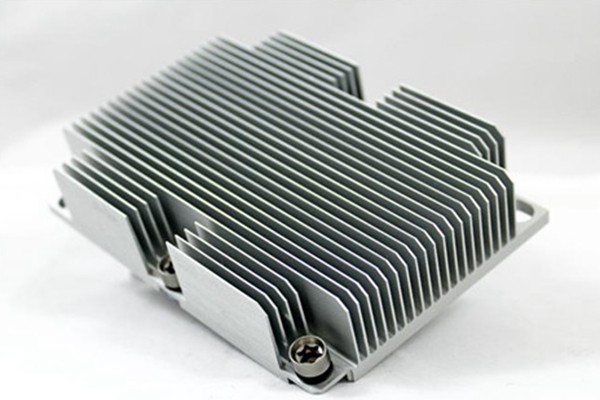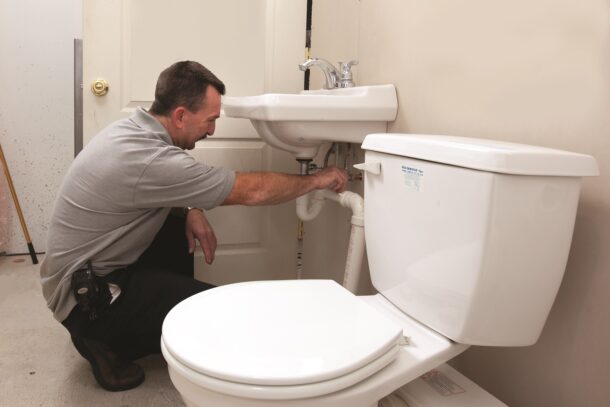Your home’s outdoor area says a lot about your property. A well-maintained outdoor space will make your property look good and impact your property value. However, most outdoor areas go unutilized or have installations that you only occasionally use. If you are looking for practical ways to use your outdoor space while having it look Read more
Whats Next

Your home’s outdoor area says a lot about your property. A well-maintained outdoor space will make your property look good and impact your property value. However, most outdoor areas go unutilized or have installations that you only occasionally use. If you are looking for practical ways to use your outdoor space while having it look good, here are some ideas to get you started.
Outdoor Fireplace
An outdoor fireplace is a great way to elevate your outdoor space. Not only does it provide a focal point for your patio or deck, but it also allows you to enjoy the outdoors even when the temperature starts to drop.
There are a few things to remember when choosing an outdoor fireplace. First, consider the size of the unit and make sure it will be able to accommodate the firewood you plan on using. Next, think about the fuel source. Many outdoor fireplaces use propane or natural gas, but wood-burning models are also available. Lastly, decide on the style of the unit. Many options are available, from classic brick designs to modern stainless steel models.
Sunken Deck
Not only do sunken decks add a touch of luxury, but they can also be a practical solution for difficult-to-access areas. Sunken decks are typically built into the ground, blending in with their surroundings and not requiring railings. This makes them ideal for slopes or hillside locations.
In addition, sunken decks can provide extra privacy and help to create a sense of separation from the rest of the yard. If you’re considering a sunken deck for your home, work with an experienced deck builder who can help you handle issues like drainage and building codes.
Outdoor Kitchen
An outdoor kitchen is a great way to make your backyard or patio more inviting and functional. With an outdoor kitchen, you can enjoy the convenience of cooking and entertaining outside. There are various ways to design an outdoor kitchen to tailor it to your specific needs and preferences.
For example, you may want a more efficient kitchen with a built-in grill, sink, refrigerator, and storage space. You may also opt for a more basic setup with just a grill and prep station.

Outdoor Bathroom
An outdoor bathroom can be a great addition to any home. Not only is it a convenient place to wash up after a long day outside, but it can also be a beautiful and relaxing spot to enjoy the fresh air. However, there are a few things to keep in mind when planning an outdoor bathroom.
First, consider the climate. If you live in an area with cold winters, you’ll need to ensure your bathroom is well-insulated to prevent freezing pipes. Next, think about privacy. You’ll want to choose a relatively secluded location so you can relax without worry.
Lastly, consider the amenities you’ll need. A basic bathroom should include a sink, toilet, and shower. However, you may also want to add features such as a bathtub or sauna for even more relaxation. Work with professionals to get the perfect bathroom design for your space and needs.
Vegetable Garden
A vegetable garden is a great way to elevate your outdoor space. Not only does it provide you with fresh, nutritious produce, but it also adds beauty and value to your home.
If you’re thinking of installing a vegetable garden, there are a few things you need to keep in mind. First, you’ll need to choose a location with plenty of sunlight. Vegetables need at least six hours of sunlight per day to thrive.
You’ll then need to prepare the soil. This involves adding organic matter and tilling the soil to a depth of at least eight inches. Finally, you’ll need to choose the right plants for your garden. Be sure to select plants that are well-suited to your climate and have similar water and light requirements.
The outdoor area is usually the first part of your property that people see; it’s, therefore, crucial to ensure that it looks good and is useful to you. An outdoor fireplace can be an excellent place to relax with friends and family, and looks great. You can also consider an outdoor kitchen to entertain when it’s hot or an outdoor bathroom to help you connect with nature. A deck can also provide extra space to share meals and hang out with your loved ones while keeping your space looking good.
In electronics, a heat sink is a passive component that transfers heat generated by an electronic device to a cooler external environment. By absorbing and dissipating heat, heat sinks enable electronic devices to remain within their safe operating temperature limits. Heat sink design Heat sink design is an important aspect of many different types of Read more
In electronics, a heat sink is a passive component that transfers heat generated by an electronic device to a cooler external environment. By absorbing and dissipating heat, heat sinks enable electronic devices to remain within their safe operating temperature limits.

Heat sink design
Heat sink design is an important aspect of many different types of devices and machinery. Proper heat sink design is critical in ensuring that these devices and components function properly and do not overheat. Overheating can lead to a number of problems, including decreased efficiency, shortened lifespan, and complete failure. Heat sink designs vary depending on the specific application. For example, larger heat sinks are typically used for high-powered lasers, while smaller heat sinks are sufficient for LED lights.
The size, shape, and material of the heat sink must be carefully considered when designing a heat sink for a specific application.
If the heat sink is not properly matched to the device or component it is cooling, it will not be effective and overheating may still occur. In some cases, multiple heat sinks may be used in order to dissipate heat more effectively. For example, a heat sink with a large surface area may be used in conjunction with a heat sink with good heat conductivity in order to cool a particularly heat-generating component.
The material used in the heat sink also varies depending on the application. For example, aluminum is a popular choice for heat sinks due to its good heat conductivity. Copper is another common choice due to its even better heat conductivity. However, copper is more expensive than aluminum and can be difficult to work with, so it is not always the best choice for every application.
It is important to note that heat sinks are not the only way to manage heat in electronic devices and components. In some cases, other methods such as forced air cooling or water cooling may be used instead of, or in addition to, heat sinks.
However, heat sinks remain a popular choice for many applications due to their simplicity and low cost.
Common applications for heat sinks include:
- Regulating the temperature of electronic devices and components
- Cooling high-powered lasers
- Dissipating heat from LED lights
- Managing heat in power amplifiers
All in all, when properly designed and installed, a heat sink can help to keep your devices and components running cooler and perform better for longer.

Types of heat sinks
A heat sink is a device that helps to cool an electronic or mechanical device by absorbing and dissipating heat from it. There are many different types of heat sinks available on the market, each designed for specific applications.
Some common types of heat sinks include:
- Fan-cooled heat sinks: These heat sinks have a fan attached to them which helps to circulate air and dissipate heat more quickly. They are often used in high-power devices such as CPUs and GPUs.
- Liquid-cooled heat sinks: These heat sinks use liquid cooling instead of air to help dissipate heat more quickly. They are often used in high-performance devices such as servers and gaming PCs.
- Passive heat sinks: These heat sinks do not have any fans or other active cooling methods, and instead rely on convection and radiation to dissipate heat. They are often used in low-power devices such as laptops and smartphones.
There are many factors to consider when choosing a heat sink for a particular application, such as the size and power of the device, the environment in which it will be used, and the required cooling performance. The type of heat sink you choose will also depend on your budget and the level of noise you are willing to tolerate.

Advantages of machining a heat sink using a CNC
When looking at heat sink design and manufacture, there are several key factors that come into play in order to create an effective heat sink. One important factor is the method of machining the heat sink. A CNC machine can offer a number of advantages over other methods of machining, making it the ideal choice for heat sink production.
Some of the benefits of using a CNC machine to machine a heat sink include:
Increased accuracy
When heat sinks are produced using a CNC machine, the process is much more accurate than other methods such as hand grinding or milling. This increased accuracy results in a better finished product with less waste.
Greater repeatability
The use of a CNC machine also allows for greater repeatability in the manufacturing process. This means that heat sinks produced using a CNC machine will be more consistent in terms of quality and performance.
Faster production times
The increased accuracy and repeatability of the manufacturing process also results in faster production times. This is particularly beneficial if heat sink demand is high or if deadlines need to be met.
Reduced manpower requirements
As the CNC machine can handle the majority of the machining process, there is less need for manual intervention. This reduces the amount of skilled labor required and can lead to reduced costs.
Overall, there are many advantages to using a CNC machine to machine heat sinks. The benefits of increased accuracy, repeatability, and faster production times can make a significant difference in the quality and performance of the heat sink. When considering heat sink design and manufacture, it is worth considering the use of a CNC machine to ensure the best possible results.

If you are serious about becoming a plumber, there are loads of things that you need to make the most of when you are trying to improve this process as much as possible. You need to make sure you come up with some of the key ideas that you’ve got to make the most of Read more
If you are serious about becoming a plumber, there are loads of things that you need to make the most of when you are trying to improve this process as much as possible. You need to make sure you come up with some of the key ideas that you’ve got to make the most of this as much as possible. There are plenty of key factors that you need to think about when it comes to improving this process as much as possible.
When you are looking to carve out a great career as a plumber, there are so many things that you have to try to make the most of as much as possible. There are plenty of ideas that you need to keep in mind when you’re looking to get right as much as possible. Make sure you focus on some of the key elements that you can use to make you a better and more successful plumber, and to improve your career right now.

Stock Up on the Right Parts
Stocking up on the right parts that are going to help you be the best possible plumber you can, and this is important. You need to be able to supply and provide the right parts in order to carry out different projects and tasks that you will be required to fulfill as a plumber. This is why you need to understand what it takes to improve this process, and there are a lot of ideas that will help you to achieve this as effectively as possible. Make sure you come up with some of the key parts that are going to help you when it comes to making the most of this right now.
Work on Your Own Appliances
One of the best ways to become a better plumber is to practice and develop your skill set. The best way to do this is to work on your own appliances so that you can get better and understand the way things work before you apply those skills to your customers. This is why you have to make sure you focus on things like learning how to fix your dishwasher. This is something that would be a great place to start, and you can learn plenty as a way of being able to achieve this moving forward. Try to come up with some of the best ideas that will help you to achieve this moving forward.
Develop a Strong Reputation
Make sure you do the best you can to improve your business reputation, and there are a lot of things that play a role in this moving forward. You have to try to consider some of the best ways of being able to achieve this, and it is vital to make sure you develop the best possible reputation as a plumber. One of the best ways of being able to achieve this is to make sure you always give the best possible service, that you turn up to appointments on time, and that you always ensure the customer is satisfied with the service you have provided. This is something that you need to focus on as much as possible, and there are a lot of factors that play a role in this process moving forward, and it can really help to develop the direction your career and business goes in.
Know Your Rates (and Stick to Them)
Knowing the rates you should be charging, and making sure you stick to them, is so important. There are a lot of things that play a role in this, and you need to try to make sure you focus on the best ways of being able to achieve success with this. Make sure you come up with some of the key ideas that are going to allow you to improve this process as much as possible. Research what the industry rates are, as well as the sorts of amounts you should be looking to charge, and make sure you are doing right by yourself, your business, and your clients.
There are so many things that you need to try to make the most of as a modern business, and this is something that plays a key role in making the most of this. You have to try to look for some of the best ways of making your company more reliable, and this is something that makes a massive difference. Try to focus on the best ways of being able to achieve success with this moving forward, and there are a lot of ideas that will help you make the most of this.

When you run a plumbing business, you’ll likely spend a lot of time at client’s properties (be they residential lots or other businesses). However, this does not discount the value of having a ‘head office’. After all this can be your ‘base’ between projects, while also providing you with a safe and secure place to Read more
When you run a plumbing business, you’ll likely spend a lot of time at client’s properties (be they residential lots or other businesses). However, this does not discount the value of having a ‘head office’. After all this can be your ‘base’ between projects, while also providing you with a safe and secure place to store expensive equipment and manage your communications.
However, as small businesses often fall victim to crimes, such as cybersecurity attacks or robberies, it’s important that you invest in safety. With that in mind, here are four ways to improve security at your office.

Use an intercom system. Installing an office intercom helps you to better control who gains access to your business. As a result, this can be used to strengthen your security protocols, by reducing the chances of unauthorized personnel entering your property. Furthermore, as modern intercom systems also feature cameras, they act as a deterrent for crime as offenders know that they’re likely to be caught on camera.
Install CCTV & Alarms. As mentioned above, the presence of video and audio recording software, such as CCTV is one of the most effective ways to protect your business from crimes such as theft or vandalism. As a result, they are an important asset for those who may store valuable or expensive equipment on site, such as plumbing or construction equipment. CCTV recordings can also be used as evidence in legal procedures or if you need to make an insurance claim. On a similar note, installing alarms can improve office security as they ensure you are alerted immediately when a breach occurs. Often alarms can also be set up to notify the relevant authorities too, who will be able to deal with the issue promptly, giving you much greater peace of mind.
Provide your employees with the appropriate training. Security procedures and protocols should form an essential part of your employee training plans, especially as security measures can heighten safety in the workplace and on jobsites. You should ensure that this training provides employees with insight on how they can make your business more secure – such as by ensuring that all doors/windows and entry points are secured/locked at the end of the workday.
Take cybersecurity seriously. Cybersecurity is important no matter what industry you operate within, especially as new data suggests that ”small businesses are collectively subject to almost 10,000 cyber-attacks a day.” While these attacks vary in severity, any time sensitive information is leaked, you’re putting your business at risk and losing money. You could also face legal consequences. As a result, it’s vital that you take cybersecurity just as series as the physical security of your office. Thankfully, this does not have to be a complex task. Typically, installing cybersecurity software will make you much less vulnerable to these attacks, though you should also ensure that your employees are aware of the steps needed to take safe online. You should also ensure that your team is ready to set up strong passwords for their accounts – as poor passwords make the entire business vulnerable to data leaks.
Working as a tradesperson can be a very rewarding career, as you not only provide services that help other people, but you can also earn a very good living. Among the trades that you can work in is plumbing, and with this sort of job, you know that your services will always be in demand Read more
Working as a tradesperson can be a very rewarding career, as you not only provide services that help other people, but you can also earn a very good living. Among the trades that you can work in is plumbing, and with this sort of job, you know that your services will always be in demand. If you have qualified as a plumber, you do have the option to set up on your own as a sole trader. However, some people prefer the security and convenience of working for an employer.
If you want to gain employment at a plumbing company as a plumber, it is important that you take the right steps in order to boost your chances of success. Once you gain employment in this field, you can enjoy job security in a position where your services are needed in business and residential environments. In addition, you can look forward to good pay as a qualified plumber as well as a range of benefits with the right employer. In this article, we will look at some tips on how to get work as a plumber for a company.

Tips That Can Help
There are a few key tips that can help you to achieve your goal of becoming a plumber and working for a reputable company. Some of the key ones are:
Make Sure You Have Necessary Qualifications and Training
One of the things that you need to do if you want to enter into this type of career is to ensure you have the necessary training and qualifications. Naturally, you need to have undergone specialist training to develop the skills and expertise you need as a plumber, so if you do not already have these, you will need to look at your training options so that you can get the certification you need.
Register on Relevant Job Agency Sites
Once you have the necessary training and qualifications under your belt, you need to take steps to identify suitable opportunities. One of the key things that you should do is to register your details on online job agency sites, as this is something that can make it much easier for you to find out about relevant jobs that arise. You can be informed of opportunities as they come up via email, which can save you a huge amount of time and effort.
Create a Great Resume
One of the other things that you can do in order to get into this type of job is to create a great resume, and you can find plumber resume examples online to help you with this. Once you have created the ideal resume, you will be able to impress potential employers, and this can increase your chances of getting an interview. This is why it is important to put plenty of effort into creating a great resume.
These are some of the key steps you should take if you want to boost the chances of a plumbing career.
